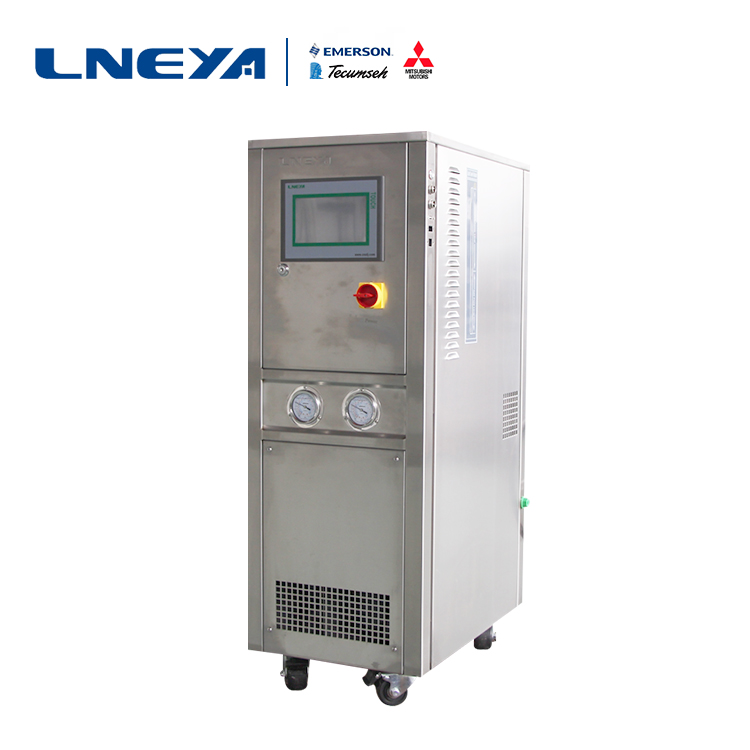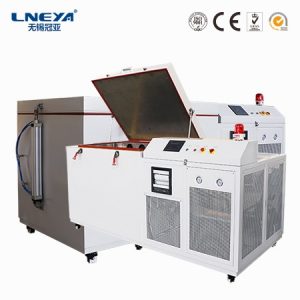Description of refrigeration principle in semiconductor wafer temperature control
In the operation of the semiconductor wafer temperature control refrigeration system, a state transition of a certain working fluid is used, and the necessary heat Q0 is extracted from the heat source of a lower temperature, and the heat Qk is sent to the heat source of the tropical heat through a storage process of the consumption power W. In this process, Qk = Q0 + W is taken from the conservation of energy.
In order to achieve temperature control of semiconductor wafer temperature migration, a process of lowering the temperature of the refrigerant to a lower temperature environment is forcibly performed, and heat is continuously extracted from the object to be cooled, and this is achieved within the boundary of the refrigeration technique. The process has several basic steps: phase change refrigeration: the use of liquid evaporation at low temperatures or the dissolution or sublimation of solids at low temperatures to extract heat from the object being cooled. Normal air conditioners are all such cooling steps. Gas expansion refrigeration: The high pressure gas can reach a lower temperature after adiabatic expansion, so that the low pressure gas can be reheated to cool. Gas eddy current refrigeration: After the high pressure gas is expanded by the vortex tube, it can be respectively hot and cold air flow, and can be cooled by the reheating process of the cool air flow. Thermoelectric cooling: The direct current is passed through the semiconductor thermopile, which can have a cold effect at one end and a thermal effect at the other end.

The temperature of the semiconductor wafer is controlled during operation. At the high temperature, no heat transfer medium evaporates, and it can be realized without pressure. -80 to 190 degrees, -70 to 220 degrees, -88 to 170 degrees, -55 to 250. Degree, -30 ~ 300 degrees continuous temperature control. The principle and function of semiconductor wafer temperature control have many advantages for the user: Because only the heat transfer medium in the expansion chamber is in contact with the oxygen in the air (and the temperature of the expansion tank is between normal temperature and 60 degrees), the reduction can be achieved. The heat transfer medium is oxidized and absorbs moisture in the air.
In the semiconductor wafer temperature control, the principle of refrigeration is as shown above. When the user controls the temperature control of the semiconductor wafer, the user should pay attention to the principle of refrigeration, and better operate the semiconductor wafer temperature control after understanding.
Raccomandazioni correlate
-
Requisiti per l'installazione dei refrigeratori glicolici
1121In estate, l'uso di refrigeratori di glicole è relativamente frequente. Sono necessari anche refrigeratori di glicole efficienti. Pertanto, quando si installano i refrigeratori di glicole, è necessario installarli su un pavimento liscio e ordinato. Perché scegliere un pavimento liscio quando...
Visualizza i dettagli -
Practical application area of air-cooled chiller
959Air cooled chillers, as the name implies,are mainly used in colleges and universities, scientific research andlaboratories. Specially for the cooling of small laboratory equipment such asspectrometer, mass spectrometer, viscometer, rotation, fe...
Visualizza i dettagli -
The Instruction Of Ultra Low Temperature Freezer Minus 80 Degrees
1159The machine must be tested before usage (or before it is energized again) in the following conditions: when ultra low temperature freezer is first used in ultra low temperature freezer minus 80 degrees, or after the ultra low temperature freezer i...
Visualizza i dettagli -
Analysis of the environmental requirements of the -20 °C freezer
1042Due to the difference in ambient temperature, there are certain requirements for the freezer. Today LNEYA came to tell you how the ambient temperature is good for the -20 °C freezer. Now there are many types of freezer boxes: hot and cold temperat...
Visualizza i dettagli
 Refrigeratori industriali LNEYA Produttore Fornitore
Refrigeratori industriali LNEYA Produttore Fornitore













